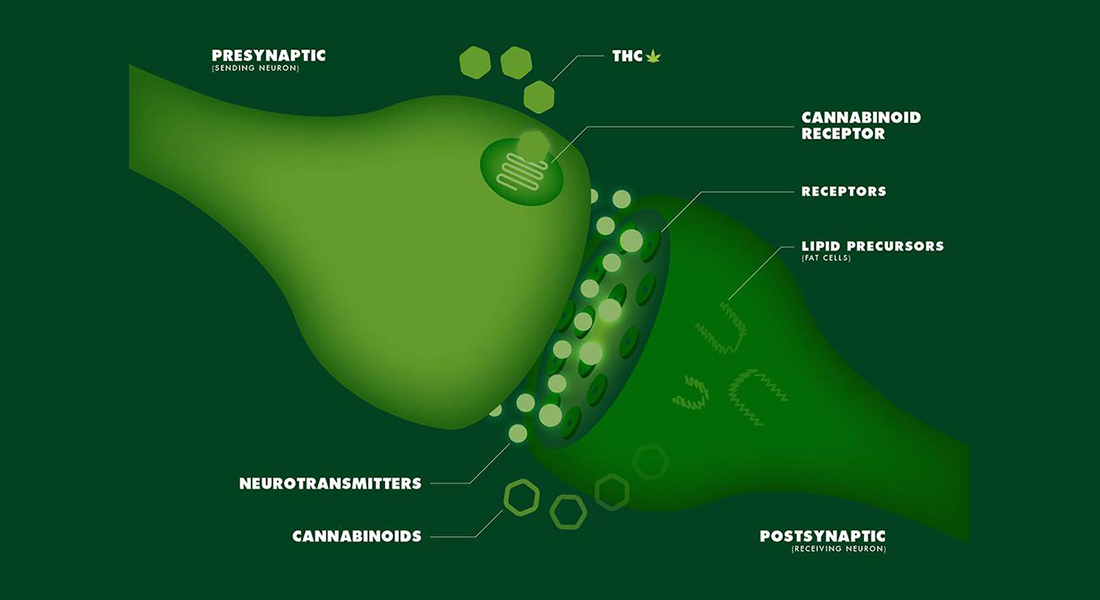
Cannabidiol (CBD) is the second major cannabinoid found in cannabis plants like hemp and marijuana. Unlike the other major cannabinoid THC, CBD is non-psychoactive. Research studies have shown that CBD may, reduces pain, relaxes muscle spasms, potent anti-inflammatory, stops nausea/vomiting, reduces anxiety/depression, counters psychotic thoughts, anti-oxidant, anti-convulsant, neuro-protectant, and anti-tumor effects. For more information on CBD research studies please visit www.PuritiProviderSelect.com/Studies.
What does CBD stand for?
CBD stands for cannabidiol - the most common cannabinoid found in industrial hemp.
CBD tinctures are made by diluting industrial hemp extracts with a carrier oil such as, hempseed oil, or MCT fractioned coconut oil. Studies have shown that CBD oil is best to be held under the tongue (sublingual absorption) where it is absorbed directly into the bloodstream. A sublingual absorption provides a faster effect than absorption via the stomach.
The ECS is the collection of cannabinoid receptors, endocannabinoids, and enzymes involved in the production and break down of endocannabinoids. Endocannabinoids are naturally occurring cannabinoids found within our body. The two most studied endocannabinoids are anandamide and 2-AG. The two most studies cannabinoid receptors are CB1 and CB2. CB1 receptors are located mostly in the brain and CB2 receptors are located mostly throughout the immune system.
Where are the CB1 receptors located?
CB1 receptors are located primarily in the central nervous system (the brain and spinal chord).
Where are the CB2 receptors located?
CB2 receptors are located primarily in the immune system.
What is the purpose of the endocannabinoid system?
The endocannabinoid system acts a homeostasis regulator in the body. Its purpose is to maintain balance.
Do drug tests look for CBD?
No. Drug tests look for THC, the psychoactive cannabinoid found in marijuana. Drug tests do not test specifically for CBD. However CBD hemp extracts could contain a small amount of THC. These small amounts of THC, even if they are tiny, can cause a failure of a drug test when a person is using CBD oil. Caution must be taken with drug tests and CBD oil.
How does a cannabinoid work?
Cannabinoids generally work by binding to our body’s cannabinoid receptors (CB1 or CB2). Cannabinoids like CBD can work in other ways by targeting non cannabinoid receptors in the body.
Research studies indicate clinical endocannabinoid deficiency (CECD) is a treatable condition. Low endocannabinoid levels in the body or ECS dysfunction can contribute to the development of certain conditions such as migraines, fibromyalgia and irritable bowel syndrome to name a few. None of these conditions have a clear underlying cause. They are often resistant to treatment and sometimes occur alongside each other.

Cannabidiol (CBD) is the major cannabinoid found in industrial hemp. Unlike THC, CBD does not make you “high” and typically does not cause any negative effects. Further research is needed to fully understand how CBD interacts with the ECS.
China’s water supply has been contaminated by the dumping of toxic human and industrial waste. Pollution-induced algae blooms cause the surface of China’s lakes to turn a bright green, but greater problems may lurk beneath the surface; groundwater in 90 percent of China’s cities is contaminated.
China’s coastal manufacturing belt faces the most pollution. Despite the closure of thousands of pollutant sources, a third of the waterway remains well below the government’s modest standards for water quality. Most of China’s rural areas lack a system to treat wastewater.
Water pollution in China has doubled from what the government originally predicted because the impact of agricultural waste was ignored. Farm fertilizer has largely contributed to water contamination. China’s water sources contain toxic of levels of arsenic, fluorine and sulfates, and pollution has been linked to China’s high rates of liver, stomach and esophageal cancer.
For more information on how to obtain Puriti Provider Select products please contact us and we can help.
Info@PuritiProviderSelect.com (704) 508-2016 PuritiProviderSelect.com
